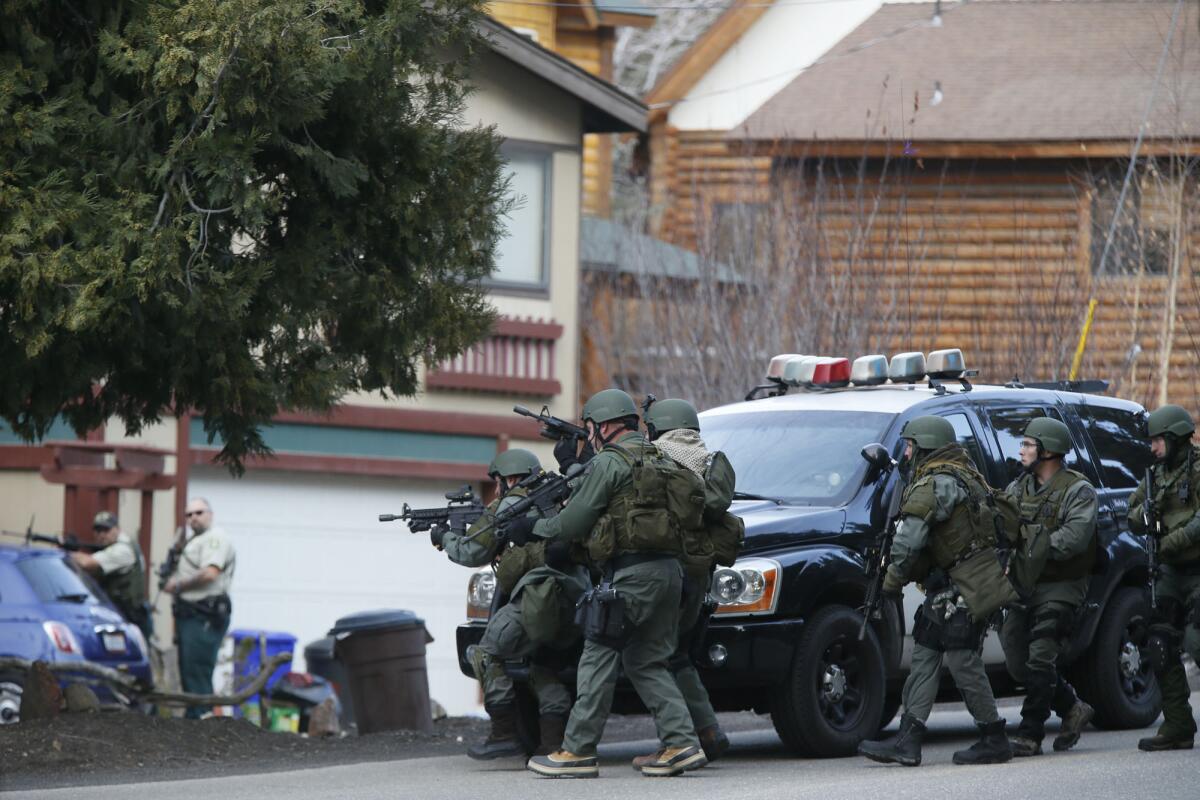Dorner report: Police failed to communicate during manhunt

- Share via
Although police largely performed admirably as they hunted for Christopher Dorner, poor communication, competing interests and a chaotic, undisciplined response to the wanted man’s final stand highlighted serious problems, an independent report concluded.
On Monday, the Police Foundation, a Washington D.C.-based research group, released a detailed review of how the Los Angeles Police Department and several other agencies responded to Dorner, a former LAPD officer who killed four people and injured others as he sought revenge for his firing.
The Dorner manhunt, including many of the issues addressed in the Police Foundation’s report, was detailed in a Los Angeles Times series last year.
The foundation’s report praised the overall work of the many law enforcement agencies involved in the Dorner manhunt, which spanned 12 days in February 2013. The report also acknowledged that police were forced into a complicated, deadly situation that spread across multiple jurisdictions.
The report, however, was critical of several shortcomings.
One of the notable problems, the report’s authors concluded, was the sometimes poor communication and collaboration among the various police departments.
The LAPD, for example, should have done more to notify nearby agencies that it was sending hundreds of its cops outside the city limits to guard the homes of LAPD officers who had been targeted by Dorner in a manifesto.
“The lack of consistent communication and liaison with local agencies was critical,” the report concluded. “Most said they would have preferred direct involvement in the planning and execution of the protection measures.”
Similarly, the report cited a dispute that broke out after Dorner torched and abandoned his truck on a snow-covered mountain road in Big Bear.
Investigators from both Riverside and Irvine were conducting separate homicide investigations into people Dorner had killed and clashed over who should take the lead on the examination of the truck.
Ultimately, an agreement to cooperate was reached, but the report underscored the episode as “another example of the need for more collaboration by line officers at the onset of a complex and emotional incident.”
Also troubling was the scene at the cabin in the woods in Big Bear where Dorner was finally cornered.
As word spread that Dorner was trying to flee the Big Bear area in a stolen SUV, hundreds of officers from throughout the region took it upon themselves to descend on the area without any orders to do so.
The huge influx of well-intentioned, but uninformed cops -- many of whom showed up unprepared for the wintry mountain conditions -- made a chaotic situation far more messy and dangerous, the report found.
With the roads around the cabin clogged with traffic from all the officers, and with many of them brandishing high-powered weapons despite not even being within sight of the cabin, the foundation called on department leaders to establish and enforce rules for future incidents that would prevent officers from responding to a unfolding scene until the agency in charge requests them.
After a wild firefight with officers who had surrounded the cabin, Dorner ignored commands to surrender. Tear gas canisters fired by police ignited a fire.
As the cabin became engulfed, Dorner killed himself with a gunshot.
More to Read
Sign up for Essential California
The most important California stories and recommendations in your inbox every morning.
You may occasionally receive promotional content from the Los Angeles Times.











